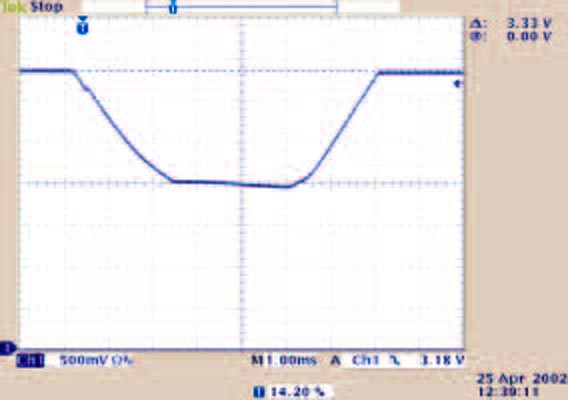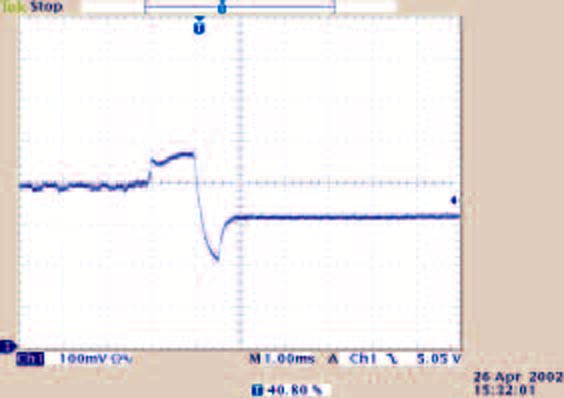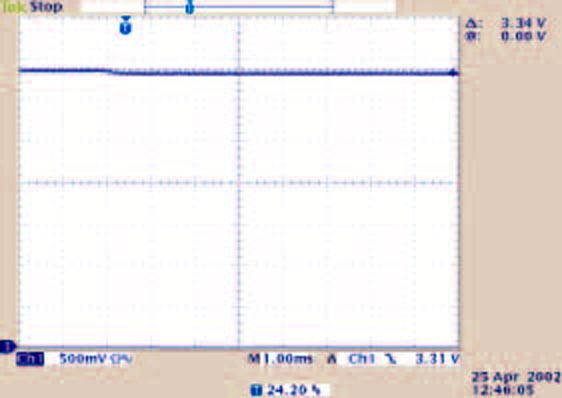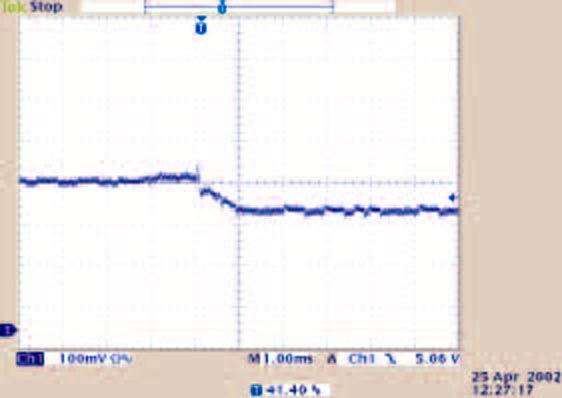For redundancy purposes, a number of power supplies, using ORing diodes, can work into the same load. During maintenance, when you can remove any power supply, the minimum possible power perturbation at the load is desirable. To compensate for the voltage drop across the ORing diodes, you must connect the power-supply feedback lines after the diodes, at the load. Thus, the feedback connection is common for all participating power supplies (Figure 1). Because of natural variations in each power supply, only the one with the highest VOUT is active. The others, sensing the “higher” output voltage, try to reduce their own outputs, effectively turning off their regulation.
 |
||
| Figure 1. | A standard redundant configuration of power supply modules uses ORing diodes at the outputs. |
|
If you remove the “active” module from the setup similar to Figure 1, it causes VOUT to dip (Figure 2). Figure 2a applies to a linear module that comprises two regulators that have independent 3.339 and 3.298 V output voltages. Both have loads of approximately 10 Ω in parallel with 100 µF. Figure 2b applies to a boost configuration that comprises two regulators with 5.08 and 4.99 V outputs, each loaded with approximately 2.5 Ω in parallel with 100 µF.
|
||||||
| Figure 2. | A standard redundant configuration of power supply modules uses ORing diodes at the outputs. |
|||||
The sags and glitches in the voltages arise from the inevitable delay for another power supply to step in and to start the regulation. Costly power-supply bricks deal with this problem by using current-sharing techniques. The techniques provide roughly equal output-current distribution among all power modules, thus keeping all modules active. The configuration in Figure 3 adds little cost to a power system. The improvements in performance are evident in Figures 4a and 4b, representing the two types of redundant power-supply modules.
 |
||
| Figure 3. | The addition of an instrumentation amplifier and a few passive components provides sag- and glitch-free redundant performance. |
|
|
||||||
| Figure 4. | Linear (a) and boost (b) regulators use the scheme in Figure 3 to eliminate sags and glitches in the output voltage. |
|||||
An instrumentation amplifier, IC1, measures and produces a voltage, VC, proportional to the current going into the regulator. VC in turn controls VOUT, pushing the regulator into active mode. For most adjustable controllers,

where RA is R1A, and RB is R1B for module 1. If no current flows through RSENSE, IC1’s output is close to ground, paralleling R1B with the resistances of D1.2, R11, and R12, thereby making RB smaller and VOUT1 consequently higher. The increase needs only to compensate the VOUT variation between same-configuration power supplies. This variation is only a few percentage points. If the current into the load rises, VC also rises, reducing the current through D1.2 and consequently reducing VOUT1. When IC1’s output rises and differs from VFB by less than the direct voltage drop across D1.2, no current flows through D1.2. Thus, VOUT1, for any higher current, stays at the value the above equation defines. With the proper selection of R3 (the instrumentation amplifier's gain-setting resistor), R2 and R1 from other modules provide the required current into the load from all power supplies, guaranteeing that they stay in active condition.



